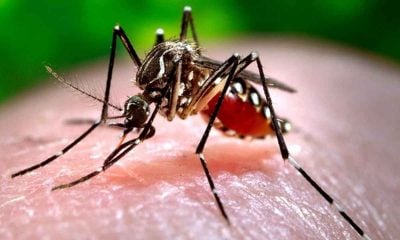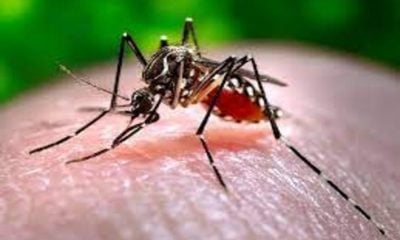Gadgets
New method developed to forecast dengue spread

Gadgets
Oppo Reno 15 likely to launch in India soon with upgraded camera and performance features
Oppo is preparing to launch the Reno 15 series in India, focusing on camera improvements, performance stability and a refined design. Here’s what to expect from its pricing and features.
Gadgets
Samsung Galaxy S25 FE India price leak suggests launch similar to S24 FE
Samsung Galaxy S25 FE India price has surfaced online, hinting at a similar launch price as the S24 FE. The phone brings a 6.7-inch AMOLED display, Exynos 2400 chip, triple rear cameras, and a 4,900mAh battery.
Gadgets
iPhone 17 series launched in India: Price starts at Rs 82,900, goes up to Rs 2.29 lakh
Apple has launched the iPhone 17 series in India with prices starting at Rs 82,900. Pre-booking begins on 12 September, and the phones will be available from 19 September.
-

 India News23 hours ago
India News23 hours agoDelhi-Agra Expressway fog crash kills four, several vehicles gutted in Mathura pile-up
-

 LATEST SPORTS NEWS17 hours ago
LATEST SPORTS NEWS17 hours agoIPL 2026 auction: Cameron Green sets overseas record with Rs 25.20 crore move to KKR; Venkatesh Iyer joins RCB
-

 India News15 hours ago
India News15 hours agoRahul Gandhi Attacks Centre over G RAM G bill, calls it an attack on MGNREGA’s core principles
-

 Latest world news23 hours ago
Latest world news23 hours agoLuthra brothers deported from Thailand in Goa nightclub fire case
-

 India News19 hours ago
India News19 hours agoBengal draft voter list revision removes 58 lakh names, triggers political row ahead of polls
-

 India News13 hours ago
India News13 hours agoDelhi pollution: Environment minister apologises, blames AAP as AQI stays very poor
-

 Cricket news13 hours ago
Cricket news13 hours agoIPL 2026 auction: Uncapped Prashant Veer and Kartik Sharma become costliest Indian buys
-

 India News17 hours ago
India News17 hours agoPriyanka Gandhi leads protest against G Ram G Bill, calls move to replace MGNREGA unconstitutional
















